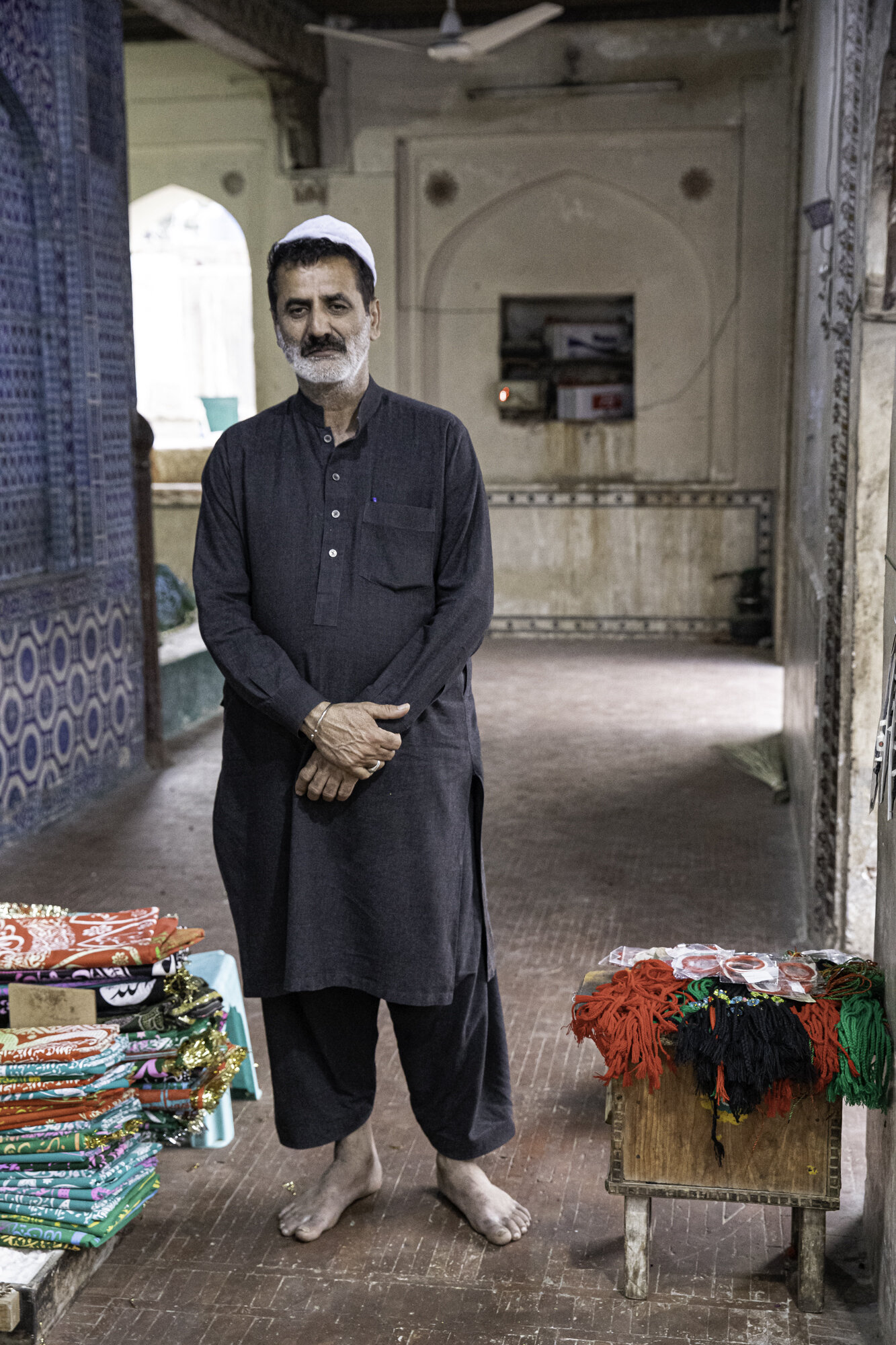Postcard from Shah Shams Sabzwari Shrine - a saint, a shrine, a story
We visited Multan in March as the weather was good for travelling, it was considered mild with most days in the low 30 degrees Celsius. Multan experiences some of the most extreme temperatures in the country with very cold winters and long, scorching summers. As Multan sits close to the Cholistan Desert the city also experiences many dust storms. The average temperature in summer sits in the mid 40’s but it has reached into the mid 50’s.
The air had cleared the day we visited the Shah Shams Sabzwari Shrine to reveal a light blue sky with white clouds. The shrine was the least well looked after shrine we visited in Multan. Built in 1329, extensively damaged by fire in 1770 and rebuilt in 1779. It once sat by the side of the Ravi River, but the river has now moved. I am now beginning to recognise the Multani style of architecture for shrines – a square base, topped by an octagonal level, minarets on each corner, finished with a dome, this time the dome was green not white. There were, of course, lots of beautiful Multani glazed tiles. Across the courtyard from the shrine sits a white mosque. Inside and outside of the shrine it is busy with people and stalls selling religious items, souvenirs and traditional Multani wood blocked print cloth.
When I was doing some background reading for this blog, I found a wonderful website called Oriental Architecture (link below). As well as the usual information on building dates and dimensions I came across the most wonderful story about Shah Shams Sabzwari and Bahauddin Zakariya (see my previous blog on his shrine).
The story goes that when Shams arrived Zakariya was not happy as he didn’t like yet another saint arriving in his city. Zakariya sent Shams a cup filled to the top with milk. A not too subtle way of saying the city is full of saints. Shams sent the full cup back with a rose petal on the top as a way of saying his presence wouldn’t disturb Zakariya.
Zakariya wasn’t happy about the cup being returned so ordered the city merchants not to sell anything to Shams. Shams took pity on his disciples who were hungry and caught a pigeon for them to eat (you will have seen from my other blogs how important pigeons are in the city and that there are so many of them). But no merchant would agree to cook the pigeon. Shams took the pigeon and asked the sun to come closer and cook the bird. The sun came closer, the bird was cooked. The sun never moved back to its original position and this explains why Multan is so very hot.
I want to return to Multan to seek out more of its wonderful treasures, but I won’t return in the summer!
https://orientalarchitecture.com/sid/1321/pakistan/multan/shah-shams-sabzwari-tomb
Entrance to the courtyard surrounding the shrine
green dome, blue tiles, red bricks
Entrance to the shrine
Multani blue and white glazed tiles
Ceiling detail
Multani blue and white glazed tiles
Man selling religious items
The mosque inside the courtyard
One of the entrances to the mosque










